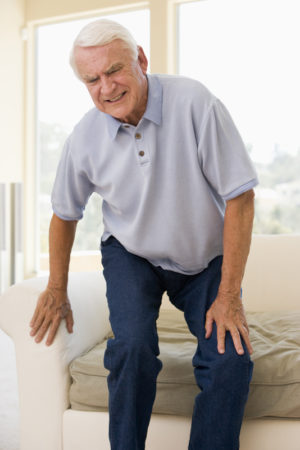
Osteo-Arthritis affects many.
DJD, or Osteo-Arthritis, is a condition that plagues most active adults. It is the degeneration of the cartilage that pads our joints. This occurs from standard usage, though there is evidence that an auto immune component may be at work against the cartilage. As the cartilage disintegrates, the two opposing bones of a joint come in contact and grind on each other. This can cause clicking and cracking to occur when the joint is bent and can become very painful.
Osteo-Arthritis is distinctive from Rheumatoid Arthritis. Osteo-Arthritis is a degenerative process whereas Rheumatoid Arthritis is an inflammatory process. Osteo-Arthritis causes symptoms that get worse with use. In other words, the pain will worsen throughout the day. Rheumatoid Arthritis will have pain that eases with mild use which dissipates the fluid that triggers the pain. Osteo-Arthritis often presents in isolated joints whereas Rheumatoid Arthritis most frequently shows up on symmetrical sides of the body.
Degenerative Joint Disease is most often treated with pain killers and anti-inflammatory drugs until a replacement joint is deemed necessary. This is like addressing an oil light on our automobile dash board by covering it up with a piece of tape. The annoying light (or pain) may be gone, but the grinding away continues.
An oral supplement of glucosamine sulfate has been used for years with its reputation for regenerating cartilage as long as there is some remaining in the joint. Historically it HAS worked, though it takes a long time and it is subject to many variables during that time.
A recent protocol for stimulating the regeneration of cartilage is through injections. These injections are grouped under the term “ProloTherapy.” Unlike steroid injections which shut down the immune system to create an anti-inflammatory environment, prolo stimulates an inflammatory response. The strategy is to choose various substances to inject into the joint area that cause “workmen” to rush to the area to rebuild the joint. Of course, with more “workmen” comes more fluid that then push on nerve endings that are pain receptors. So, the choice here is to shut down all reconstruction efforts and live in relative comfort while waiting for a prosthetic replacement or endure some discomfort while investing in reconstruction efforts, though many individuals choose to simply limit their activity in those joints that are effected or at least support them with various braces.
The three major types of prolo-therapy are injecting with a combination of glucosamine, dextrose and procaine or injecting with ozone or injecting with platelet-rich-plasma (a “stem-cell type” mix). Typically 5-10 injections are needed, spaced a number of weeks apart.
Stem cell treatments are becoming more and more available. It certainly appears to be a very eloquent way of addressing degenerating systems in our bodies. And, as with any bourgeoning industry, it is important to research out reputable resources.
Dr. Miles is a naturopathic doctor who practices family medicine at the Catalina Clinic of Integrative Medicine in Catalina.
